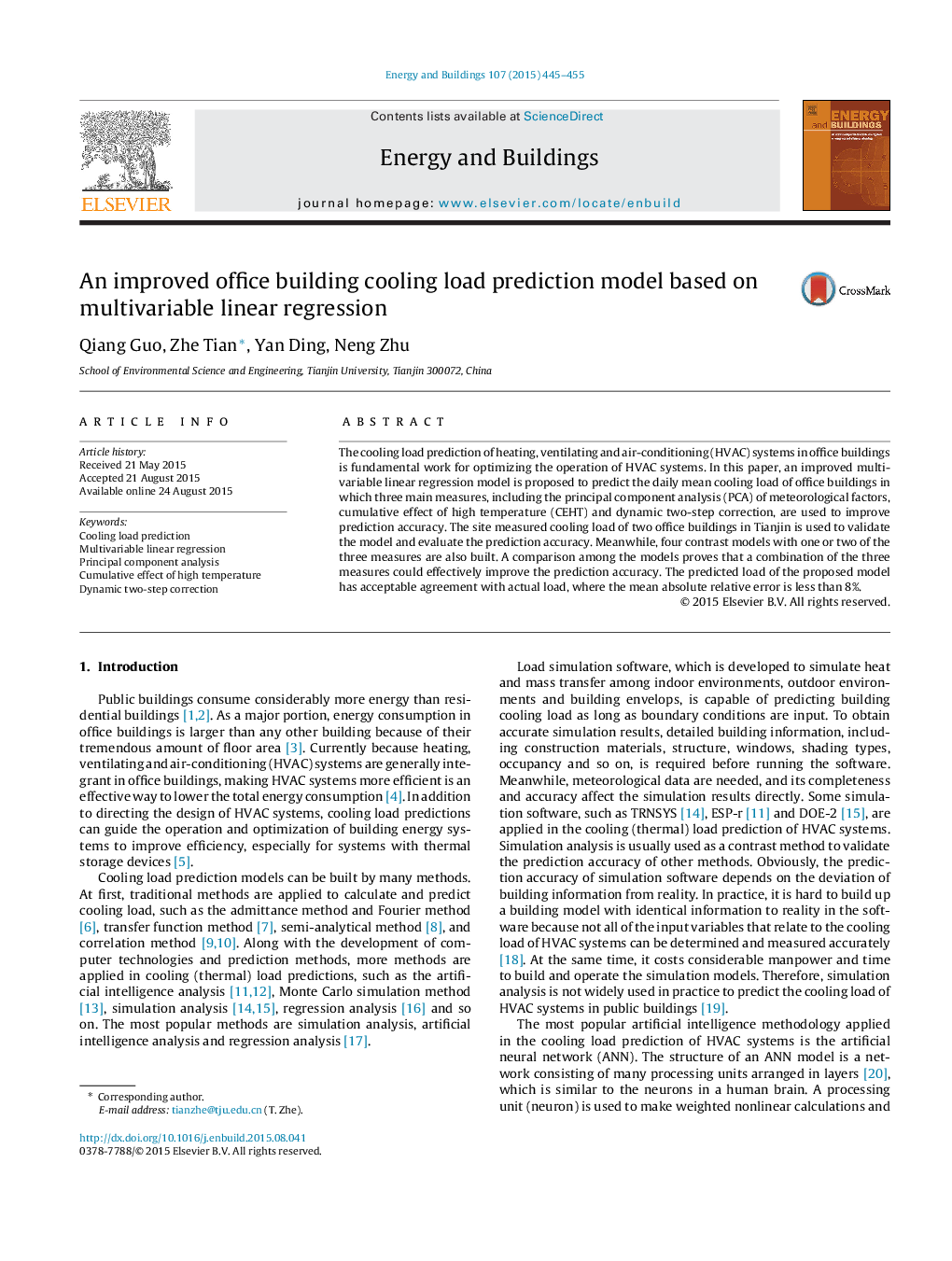| Article ID | Journal | Published Year | Pages | File Type |
|---|---|---|---|---|
| 262363 | Energy and Buildings | 2015 | 11 Pages |
•The multicollinearity among traditional input variables of cooling load predictions is proven.•PCA is applicable to avoid multicollinearity and improve prediction accuracy.•Including CEHT as an input variable is an effective way to improve prediction accuracy.•Dynamic two-step correction is proposed and is proven to be an effective way to improve prediction accuracy.•Dynamic model building is proven to be an effective measure to improve prediction accuracy.
The cooling load prediction of heating, ventilating and air-conditioning (HVAC) systems in office buildings is fundamental work for optimizing the operation of HVAC systems. In this paper, an improved multivariable linear regression model is proposed to predict the daily mean cooling load of office buildings in which three main measures, including the principal component analysis (PCA) of meteorological factors, cumulative effect of high temperature (CEHT) and dynamic two-step correction, are used to improve prediction accuracy. The site measured cooling load of two office buildings in Tianjin is used to validate the model and evaluate the prediction accuracy. Meanwhile, four contrast models with one or two of the three measures are also built. A comparison among the models proves that a combination of the three measures could effectively improve the prediction accuracy. The predicted load of the proposed model has acceptable agreement with actual load, where the mean absolute relative error is less than 8%.
